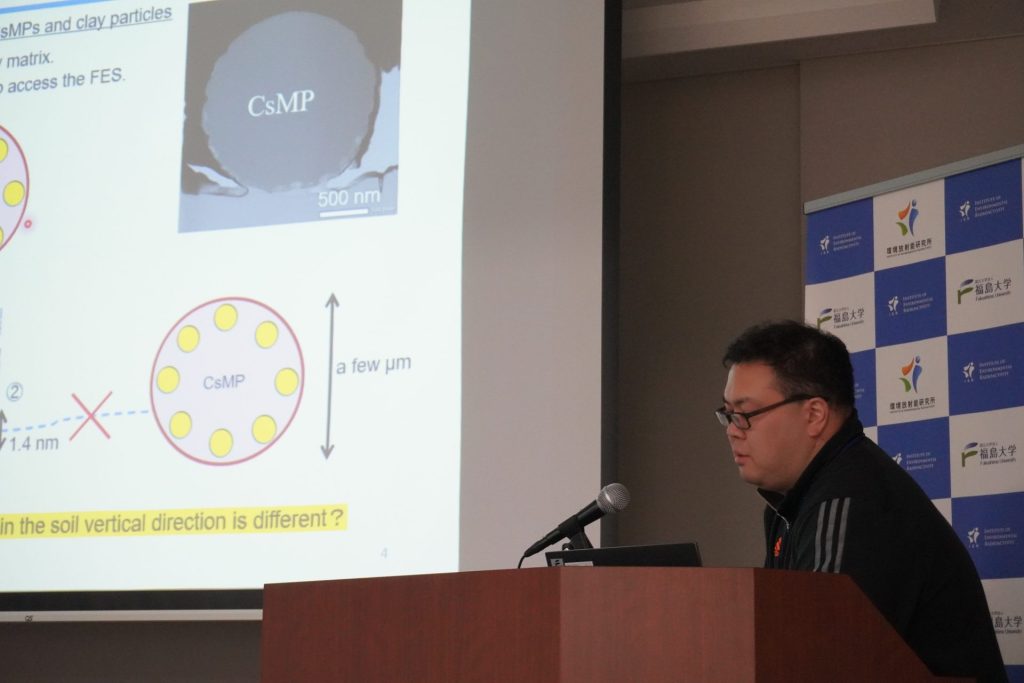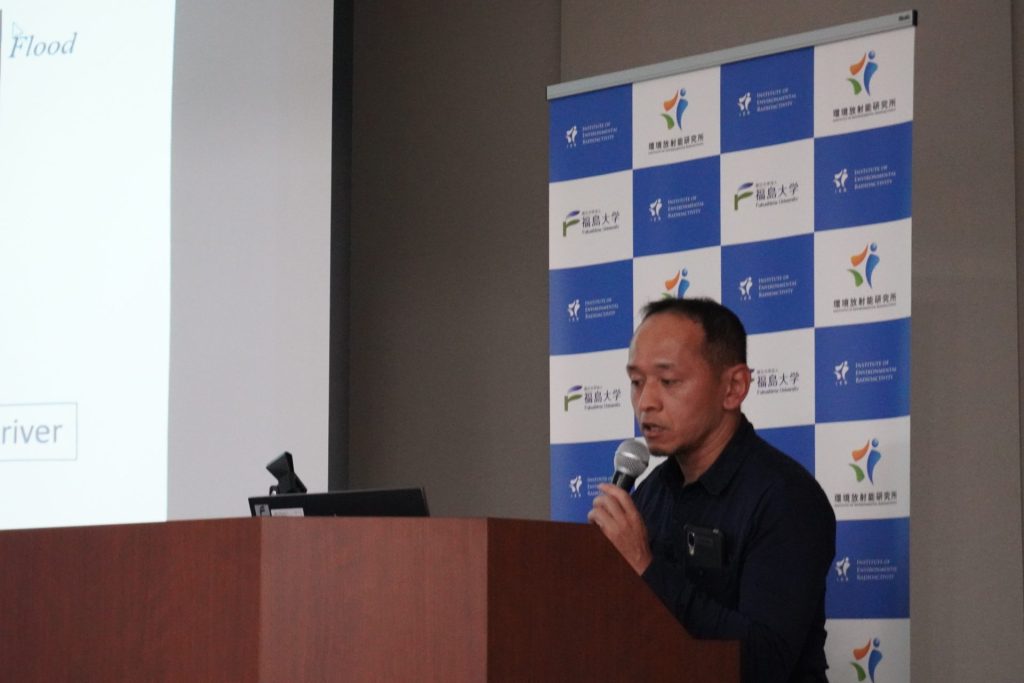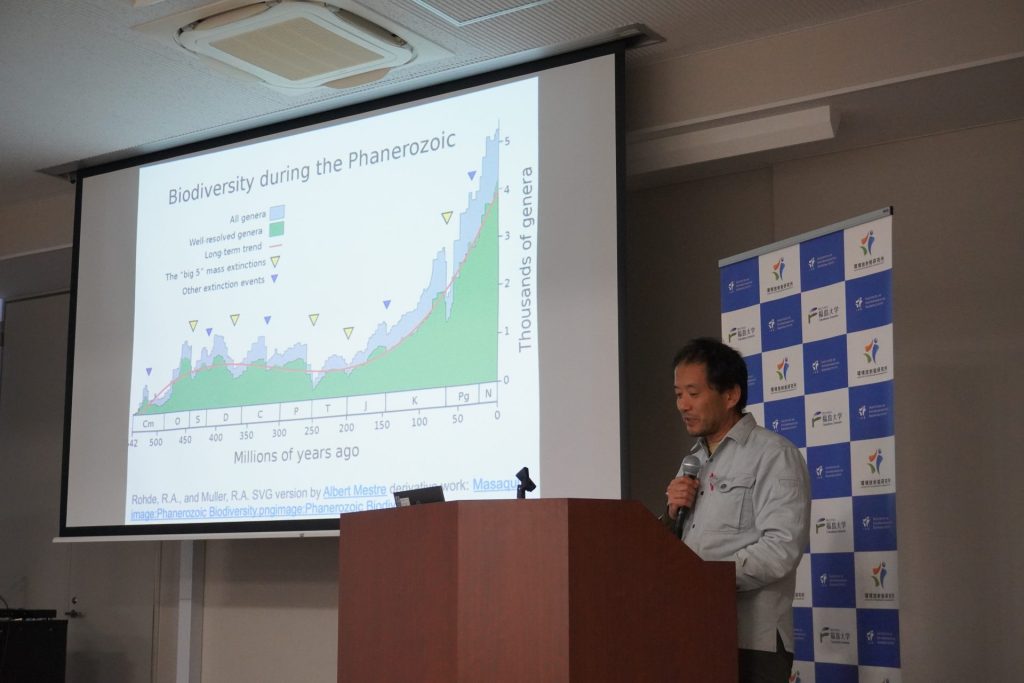November 27, 2023, 6th IER seminar of FY2023 was held <Project Researcher TATSUNO, Project Researcher KANASASHI, IER Director NANBA>
| Date & Time | Mon. November 27, 2023, 13:30-15:00 JST |
| Venue | 6F Conference room, Main Bldg. IER/Online (Zoom) |
| Speakers | Project Researcher TATSUNO Takahiro Project Researcher KANASASHI Tsutomu IER Director NANBA Kenji (Presentation order) |
| Lecture Titles | ・The distribution of radioactive cesium rich microparticles in the soil environment (Tatsuno) ・Radiocesium transportation from forests to headwater streams: The relationships among leaflitter, aquatic insect, and its excrement (Kanasashi) ・Anthropocene, Environment and environmental radioactivity (Nanba) |
Institute of Environmental Radioactivity (IER) regularly holds the IER seminar in which the faculty members report on their research results, with the aim of facilitating their research activities and promoting communication.
In the 6th IER seminar of this fiscal year that was held on November 27, 2023, three presentations were given by Project Researcher TATSUNO Takahiro, Project Researcher KANASASHI Tsutomu, and IER Director NANBA Kenji to 25 participating researchers and students.
Project Researcher Tatsuno presented the distribution of radioactive cesium rich microparticles in soils collected from Fukushima Prefecture, especially focusing on the soil depth direction and slopes of valley topography .
Project Researcher Kanasashi presented the process of transfer of radiocesium from dead leaves, which were fallen from the forest and accumulated in headwater streams, to larvae of aquatic insects (Lepidostomatidae), which feed on leaflitter, and then to the fine particulate organic matters excreted by the aquatic insects.
Director Nanba presented the newly proposed geologic time division, called Anthropocene, as follows. Geological eras are defined based on changes in the past, such as changes in biota associated with extinctions, which are remained as fossils in geological strata and can be read in the present and future. The strata also show the changes that occurred with the start of human agriculture and the increased use of fossil fuels after the Industrial Revolution, but especially the period after 1950 is known as the “Great Acceleration”, when the world’s population grew rapidly, and the use of chemical fertilizers and the production of plastics expanded rapidly. These changes have also brought about changes in the global material cycle. A key site is designated for a geologic time division, and Beppu Bay was proposed by Japan as a site where such changes were significantly recorded, while the International Union of Geological Sciences (IUGS) selected Crawford Lake, a 2.4 ha lake with a maximum depth of 24 m, located in the Biosphere Reserve between Toronto and Guelph, Canada, in summer 2023. Research targeting radioactivity and isotopes in the environment may provide insight into changes in material cycles and paleoenvironmental conditions. In addition, there should be research that can contribute from the perspective of making human settlements sustainable, as set forth in the SDGs.
After each presentation, various questions and comments were raised by IER faculty members.



